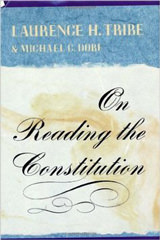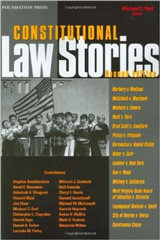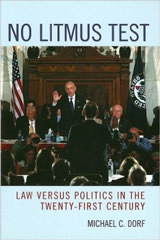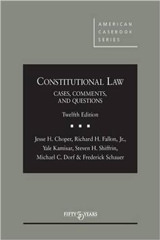Three days before his term ended, President Joe Biden released a statement “recognizing that the Equal Rights Amendment [ERA] has cleared all necessary hurdles to be formally added to the Constitution as the 28th Amendment.” Whether that statement has any impact remains to be seen, however. The Constitution gives the president no official role in the proposal, ratification, or recognition of amendments. Further, despite having been repeatedly urged to do so by New York Senator Kirsten Gillibrand and other passionate ERA proponents, President Biden did not instruct the Archivist of the United States to publish the ERA, even though a federal statute appears to designate the Archivist as the key authority regarding amendment ratification.
However, as I noted in a column on this site five years ago—on the occasion of Virginia having apparently become the 38th and thus tipping-point state to ratify the ERA—any “suggestion that the Archivist should decide an amendment’s validity is itself bonkers. The Archivist need not be and currently is not a constitutional lawyer.” The Archivist typically is not a lawyer at all.
Indeed, even if the Archivist were a renowned constitutional scholar, it would be profoundly at odds with the super-majority participatory process of constitutional amendment to have the validity of amendments turn on the judgment of one unelected official. As Professors (and renowned constitutional scholars) Laurence Tribe and Kathleen Sullivan wrote last week, the Archivist’s publication duty is “purely ministerial,” because once the tipping point state ratifies, “[n]othing in Article V makes the Constitution’s binding contents depend on any further official action by any branch of the federal government . . . .”
Professors Tribe and Sullivan also argue that Virginia’s ratification in 2020 did in fact make the ERA part of the Constitution, rejecting two objections: first, that ratifications occurring after the expiration of deadlines set by Congress but outside the text of the amendment itself are invalid; and second, that the efforts by several states to rescind their ratifications were ineffective.
Are they right? In my 2020 column, I recognized that “there are plausible arguments both for and against considering the ratification valid.” However, I reached the same conclusion that Professors Tribe and Sullivan do and for more or less the same reason: given how very difficult Article V makes it for the People to amend the Constitution, any doubts about ratification should be resolved in favor rather than against.
Does ERA Ratification Matter?
Shortly after President Biden’s announcement, Senator Gillibrand released her own statement praising him for it. Her statement also urged the “millions of women living in states with restrictions on their reproductive freedoms [to] file lawsuits to overturn these unconstitutional laws that discriminate against people based on their sex.” Although Senator Gillibrand recognized that opponents would argue in court that the ERA is not validly part of the Constitution, she noted the “strong legal backing” for recognizing it.
Yet even if Senator Gillibrand and others (including me) are correct that the ERA is now the 28th Amendment, it is not clear that this will make a practical difference on the ground. The starkest example probably concerns the laws restricting abortion that Senator Gillibrand highlighted.
Most of the Supreme Court’s 2022 opinion in Dobbs v. Jackson Women’s Health Org. was devoted to the argument that the 14th Amendment’s Due Process Clause does not protect the liberty to have an abortion and that Roe v. Wade was therefore “egregiously wrong.” However, the Dobbs Court also briefly considered and rejected an argument that abortion restrictions amount to unconstitutional sex discrimination. Notably, the Court did not say that the Constitution permits the government to engage in sex discrimination.
After all, a series of cases dating to the 1970s and litigated by then-advocate Ruth Bader Ginsburg had held that the 14th Amendment’s Equal Protection Clause renders state-backed sex discrimination subject to heightened scrutiny. As a Justice, Ginsburg wrote for the Court in a 1996 case that government must therefore offer an “exceedingly persuasive justification” for any “government action based on sex.”
Justice Samuel Alito, writing for the Dobbs Court, did not question the authority of this line of cases. Instead, he asserted that laws imposing distinctive burdens on pregnancy simply do not constitute sex discrimination. For that counter-intuitive view, he relied on a much-criticized-but-never-overruled 1974 precedent, Geduldig v. Aiello, which held that treating pregnancy differently from other medical conditions does not amount to sex discrimination because doing so does not draw a distinction between men and women. Rather, the Court said, it distinguishes between “pregnant women and nonpregnant persons. While the first group is exclusively female, the second includes members of both sexes.”
If you think that kind of hairsplitting is obtuse, you are not alone. Reacting against similar logic in a statutory case, in 1978, Congress passed the Pregnancy Discrimination Act (PDA). For purposes of federal statutory antidiscrimination law, the PDA defines sex discrimination to include discrimination based on pregnancy. However, the Supreme Court has not abandoned the Geduldig approach in constitutional cases.
What will likely happen if a new case challenging abortion restrictions reaches the Supreme Court? Absent a substantial change in personnel, there is no reason to think that the Court would invalidate such restrictions, even assuming the Justices treat the ERA as the 28th Amendment. Sex discrimination by the government, they will almost surely say, is unconstitutional under the 28th Amendment, as it also generally is under the Equal Protection Clause of the 14th Amendment, but abortion restrictions do not amount to sex discrimination for constitutional purposes. Senator Gillibrand’s faith in the ERA as a vehicle of reproductive rights is misplaced.
Potential Impact in Other Cases
Nonetheless, there is some reason to think that treating the ERA as part of the Constitution could make a difference in at least one other context. In the 2020 case of Bostock v. Clayton County, the Supreme Court—in an opinion authored by Justice Neil Gorsuch—concluded that discrimination on the basis of sexual orientation or transgender status is forbidden sex discrimination within the meaning of Title VII, the federal employment discrimination statute. During last month’s oral argument in United States v. Skrmetti, several Justices asked whether Bostock’s holding implies that transgender status discrimination counts as sex discrimination for constitutional purposes as well. If so, that would surely count as a reason for the Court to invalidate the Tennessee law banning transgender care for minors that is at issue in Skrmetti.
Justice Gorsuch did not ask any questions during the Skrmetti oral argument, but it is possible that he is contemplating going along with a suggestion by Justice Alito, who sought to distinguish Bostock on the ground that it “involved the interpretation of particular language in a particular statute.” Title VII, after all, expressly forbids discrimination “because of . . . sex.” And while one might think that implicates the same principle as the Equal Protection Clause, there is some reason to worry that Justice Gorsuch believes otherwise. In his concurrence in the 2023 affirmative action cases involving Harvard and the University of North Carolina, Justice Gorsuch made a point of distinguishing constitutional equal protection from statutory antidiscrimination, and he did so by relying extensively on Bostock.
But things look different if the relevant constitutional language is the ERA rather than the more generally worded Equal Protection Clause. The ERA’s self-executing language states: “Equality of rights under the law shall not be denied or abridged by the United States or by any state on account of sex.” That “on account of sex” looks very much like the “because of sex” language in Title VII. Thus, if the relevant constitutional language is the ERA, perhaps Justice Gorsuch, Chief Justice John Roberts (who joined the Bostock opinion), and Justice Amy Coney Barrett (who was not yet on the Court when Bostock was decided) might be willing to follow Bostock’s logic in Skrmetti.
A Hedge and a Symbol
Meanwhile, there are at least two other ways in which recognizing the ERA as the 28th Amendment might matter: as a hedge and as a symbol.
Since gaining a conservative super-majority, the Roberts Court has shown itself willing, and sometimes eager, to overturn longstanding precedents. Although there is not now a majority on the Court to reexamine the cases finding that the Equal Protection Clause generally bars sex discrimination, it is possible to imagine a future Court—perhaps one including more Trump appointees—doing so. The framers and ratifiers of the 14th Amendment, they might say, did not intend or expect it to forbid sex discrimination.
Perhaps a reactionary Court would point to Bradwell v. Illinois as evidence of the original understanding. In that case, which was decided just four years after the 14th Amendment’s ratification, a nearly unanimous Supreme Court found nothing objectionable in a state law barring women from the practice of law. “The paramount destiny and mission of woman,” Justice Joseph Bradley infamously wrote for the Court, “are to fulfill the noble and benign offices of wife and mother.” The ERA serves as a hedge against such backsliding to Gilead.
To be sure, a full revival of Bradwell is unlikely. Nonetheless, especially given the penchant of the current Court’s conservatives for close parsing of statutory and constitutional text, a constitutional provision that expressly bars sex discrimination could be decisive in a range of cases that might come out the other way under the Equal Protection Clause.
Finally, treating the ERA as the 28th Amendment serves an important symbolic purpose. Articles I and II of the Constitution repeatedly use only masculine pronouns to refer to elected officials. Even the 14th Amendment itself, in its Section 2, refers to “male citizens.” By expressly barring denials of equality on account of sex, the ERA makes clear that, even as we respect and abide by much of the work of the Founding and Reconstruction generations, we have repudiated the patriarchy they took for granted.











